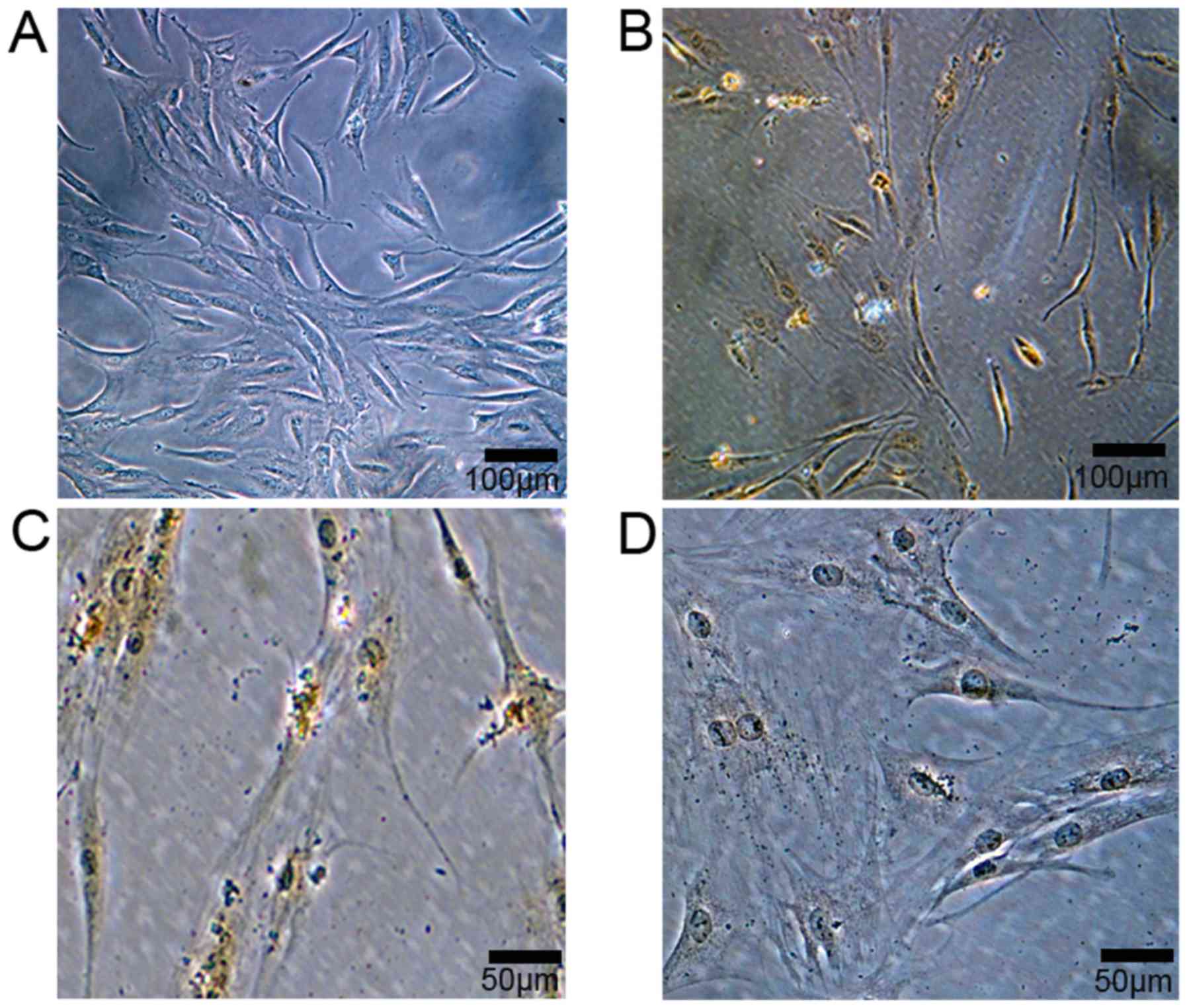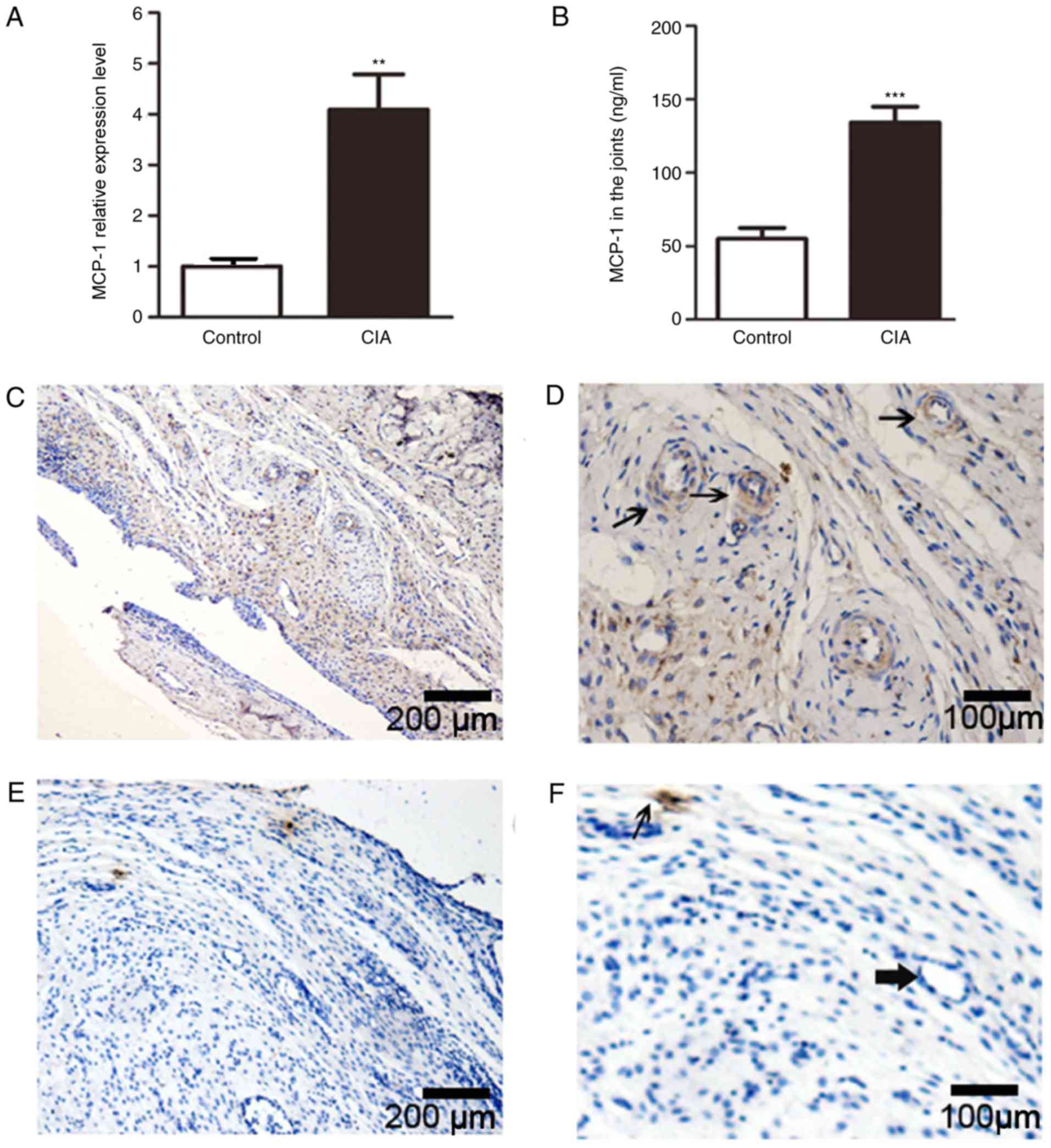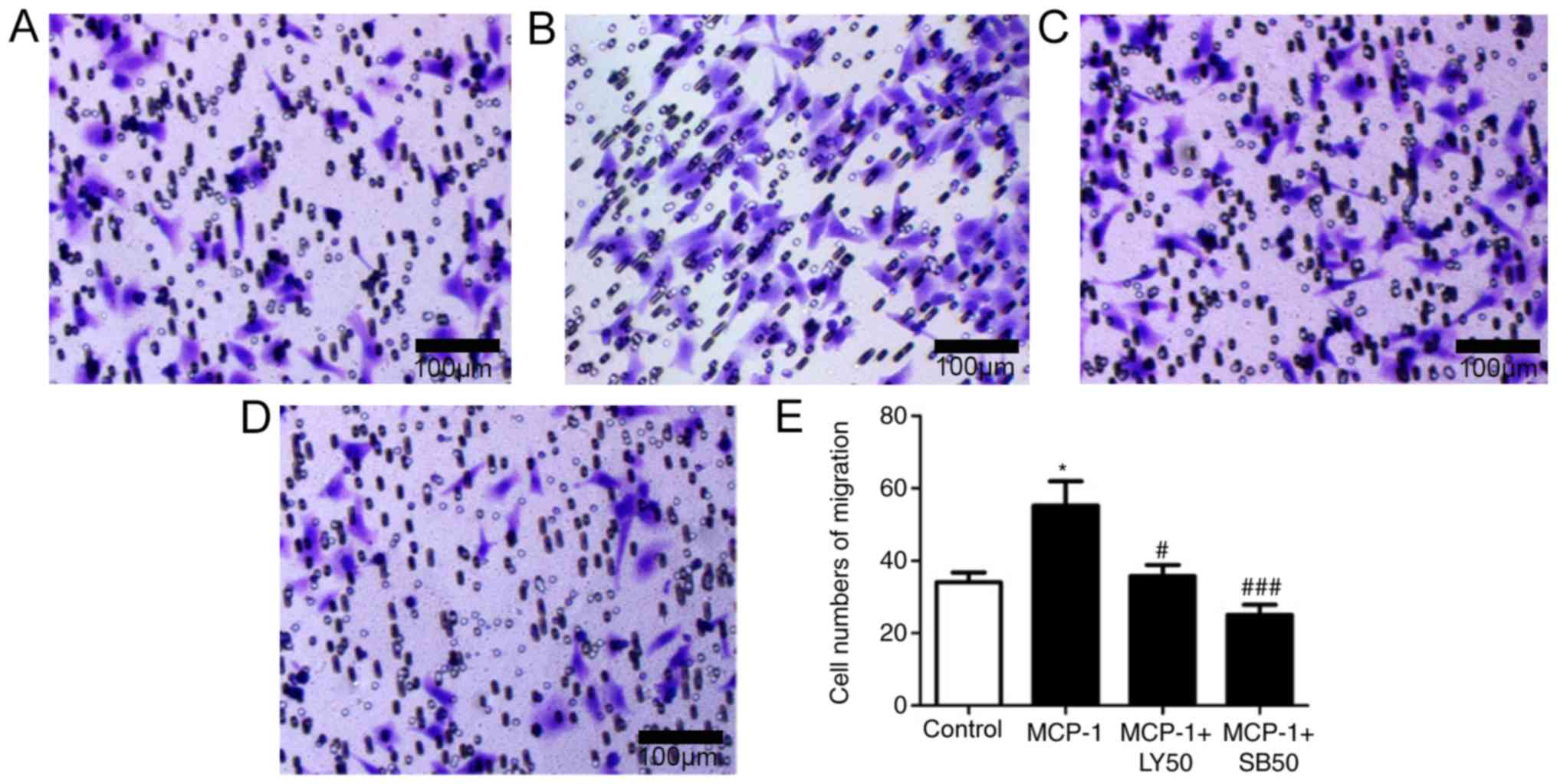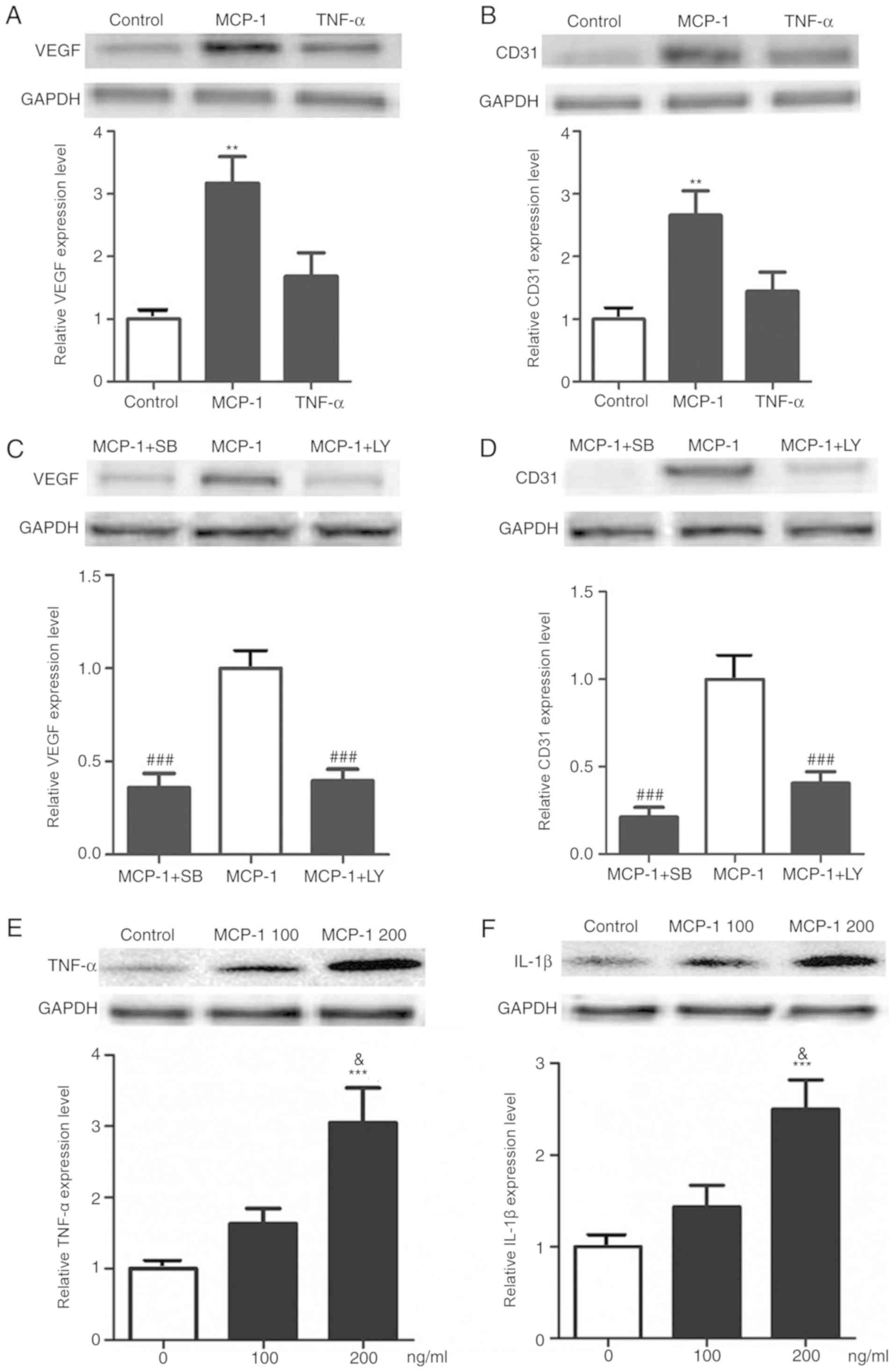|
1
|
Aletaha D, Funovits J and Smolen JS:
Physical disability in rheumatoid arthritis is associated with
cartilage damage rather than bone destruction. Ann Rheum Dis.
70:733–739. 2011. View Article : Google Scholar : PubMed/NCBI
|
|
2
|
Feng Z, Zeng S, Wang Y, Zheng Z and Chen
Z: Bisphosphonates for the prevention and treatment of osteoporosis
in patients with rheumatic diseases: A systematic review and
meta-analysis. PLoS One. 8:57. 2013. View Article : Google Scholar
|
|
3
|
Scott DL, Smith C and Kingsley G: Joint
damage and disability in rheumatoid arthritis: An updated
systematic review. Clin Exp Rheumatol. 21((5 Suppl 31)): S20–S27.
2003.PubMed/NCBI
|
|
4
|
Feng ZY, He ZN, Zhang B, Li YQ, Guo J, Xu
YL, Han MY and Chen Z: Adenovirus-mediated osteoprotegerin
ameliorates cartilage destruction by inhibiting proteoglycan loss
and chondrocyte apoptosis in rats with collagen-induced arthritis.
Cell Tissue Res. 362:187–199. 2015. View Article : Google Scholar : PubMed/NCBI
|
|
5
|
Sharif K, Jumah F, Oskouian R and Tubbs
RS: Rheumatoid arthritis in review: Clinical, anatomical, cellular
and molecular points of view. Clin Anat. 31:216–223. 2018.
View Article : Google Scholar : PubMed/NCBI
|
|
6
|
Bustamante MF, Garcia-Carbonell R,
Whisenant KD and Guma M: Fibroblast-like synoviocyte metabolism in
the pathogenesis of rheumatoid arthritis. Arthritis Res Ther.
19:1102017. View Article : Google Scholar : PubMed/NCBI
|
|
7
|
Noss EH and Brenner MB: The role and
therapeutic implications of fibroblast-like synoviocytes in
inflammation and cartilage erosion in rheumatoid arthritis. Immunol
Rev. 223:252–270. 2008. View Article : Google Scholar : PubMed/NCBI
|
|
8
|
Guo J, Zhao W, Cao X, Yang H, Ding J, Ding
J, Tan Z, Ma X, Hao C, Wu L, et al: SIRT1 promotes tumor-like
invasion of fibroblast-like synoviocytes in rheumatoid arthritis
via targeting TIMP1. Oncotarget. 8:88965–88973. 2017. View Article : Google Scholar : PubMed/NCBI
|
|
9
|
Wang H, Chen W, Wang L, Li F, Zhang C and
Xu L: Tumor necrosis factor receptor-associated factor 6 promotes
migration of rheumatoid arthritis fibroblast-like synoviocytes. Mol
Med Rep. 11:2761–2766. 2015. View Article : Google Scholar : PubMed/NCBI
|
|
10
|
Shi Y, Wu Q, Xuan W, Feng X, Wang F, Tsao
BP, Zhang M and Tan W: Transcription factor SOX5 promotes the
migration and invasion of fibroblast-like synoviocytes in part by
regulating MMP-9 expression in collagen-induced arthritis. Front
Immunol. 9:7492018. View Article : Google Scholar : PubMed/NCBI
|
|
11
|
Lochhead RB, Ordonez D, Arvikar SL, Aversa
JM, Oh LS, Heyworth B, Sadreyev R, Steere AC and Strle K:
Interferon-gamma production in Lyme arthritis synovial tissue
promotes differentiation of fibroblast-like synoviocytes into
immune effector cells. Cell Microbiol. 21:e129922019.PubMed/NCBI
|
|
12
|
Liou LB, Tsai WP, Chang CJ, Chao WJ and
Chen MH: Blood monocyte chemotactic protein-1 (MCP-1) and adapted
disease activity Score28-MCP-1: Favorable indicators for rheumatoid
arthritis activity. PLoS One. 8:e553462013. View Article : Google Scholar : PubMed/NCBI
|
|
13
|
Zheng Y, Sun L, Jiang T, Zhang D, He D and
Nie H: TNFα promotes Th17 cell differentiation through IL-6 and
IL-1β produced by monocytes in rheumatoid arthritis. J Immunol Res.
2014:3853522014. View Article : Google Scholar : PubMed/NCBI
|
|
14
|
Darrieutort-Laffite C, Boutet MA,
Chatelais M, Brion R, Blanchard F, Heymann D and Le Goff B: IL-1β
and TNFα promote monocyte viability through the induction of GM-CSF
expression by rheumatoid arthritis synovial fibroblasts. Mediators
Inflamm. 2014:2418402014. View Article : Google Scholar : PubMed/NCBI
|
|
15
|
Zucali JR, Dinarello CA, Oblon DJ, Gross
MA, Anderson L and Weiner RS: Interleukin 1 stimulates fibroblasts
to produce granulocyte-macrophage colony-stimulating activity and
prostaglandin E2. J Clin Invest. 77:1857–1863. 1986. View Article : Google Scholar : PubMed/NCBI
|
|
16
|
Satish LD, Sergey K, Shohreh A and Bassel
ES: Monocyte chemoattractant protein-1 (MCP-1): An overview. J
Interferon Cytokine Res. 29:313–326. 2009. View Article : Google Scholar : PubMed/NCBI
|
|
17
|
Rantapää-Dahlqvist S, Boman K, Tarkowski A
and Hallmans G: Up regulation of monocyte chemoattractant protein-1
expression in anti-citrulline antibody and immunoglobulin M
rheumatoid factor positive subjects precedes onset of inflammatory
response and development of overt rheumatoid arthritis. Ann Rheum
Dis. 66:121–123. 2007. View Article : Google Scholar : PubMed/NCBI
|
|
18
|
Ogata H, Takeya M, Yoshimura T, Takagi K
and Takahashi K: The role of monocyte chemoattractant protein-1
(MCP-1) in the pathogenesis of collagen-induced arthritis in rats.
J Pathol. 182:106–114. 2015. View Article : Google Scholar
|
|
19
|
Shiva S, Proudfoot AE, Park CC, Volin MV,
Haines GK, Woods JM, Aikens CH, Handel TM and Pope RM: Inhibition
of monocyte chemoattractant protein-1 ameliorates rat
adjuvant-induced arthritis. J Immunol. 180:3447–3456. 2008.
View Article : Google Scholar : PubMed/NCBI
|
|
20
|
Kuper C, Beck FX and Neuhofer W: Autocrine
MCP-1/CCR2 signaling stimulates proliferation and migration of
renal carcinoma cells. Oncol Lett. 12:2201–2209. 2016. View Article : Google Scholar : PubMed/NCBI
|
|
21
|
Salcedo R, Ponce ML, Young HA, Wasserman
K, Ward JM, Kleinman HK, Oppenheim JJ and Murphy WJ: Human
endothelial cells express CCR2 and respond to MCP-1: Direct role of
MCP-1 in angiogenesis and tumor progression. Blood. 96:34–40. 2000.
View Article : Google Scholar : PubMed/NCBI
|
|
22
|
Zhu Z, Huang P, Chong Y, George SK, Wen B,
Han N, Liu Z, Kang L and Lin N: Nucleus pulposus cells derived
IGF-1 and MCP-1 enhance osteoclastogenesis and vertebrae disruption
in lumbar disc herniation. Int J Clin Exp Pathol. 7:8520–8531.
2014.PubMed/NCBI
|
|
23
|
Chen X, Wang Y, Nelson D, Tian S, Mulvey
E, Patel B, Conti I, Jaen J and Rollins BJ: CCL2/CCR2 regulates the
tumor microenvironment in HER-2/neu-driven mammary carcinomas in
mice. PLoS One. 11:e01655952016. View Article : Google Scholar : PubMed/NCBI
|
|
24
|
Du J, Zhang F and Guo J: miR137 decreases
proliferation, migration and invasion in rheumatoid arthritis
fibroblastlike synoviocytes. Mol Med Rep. 17:3312–3317.
2018.PubMed/NCBI
|
|
25
|
Feng ZY, He ZN, Zhang B and Chen Z:
Osteoprotegerin promotes the proliferation of chondrocytes and
affects the expression of ADAMTS-5 and TIMP-4 through MEK/ERK
signaling. Mol Med Rep. 8:1669–1679. 2013. View Article : Google Scholar : PubMed/NCBI
|
|
26
|
Livak KJ and Schmittgen TD: Analysis of
relative gene expression data using real-time quantitative PCR and
the 2(-Delta Delta C(T)) method. Methods. 25:402–408. 2001.
View Article : Google Scholar : PubMed/NCBI
|
|
27
|
Dutta P, Sarkissyan M, Paico K, Wu Y and
Vadgama JV: MCP-1 is overexpressed in triple-negative breast
cancers and drives cancer invasiveness and metastasis. Breast
Cancer Res Treat. 170:477–486. 2018. View Article : Google Scholar : PubMed/NCBI
|
|
28
|
Lu E, Su J, Zhou Y, Zhang C and Wang Y:
CCL20/CCR6 promotes cell proliferation and metastasis in laryngeal
cancer by activating p38 pathway. Biomed Pharmacother. 85:486–492.
2017. View Article : Google Scholar : PubMed/NCBI
|
|
29
|
Goldbergova MP, Lipkova J, Pavek N, Pavek
N, Gatterova J, Vasku A, Soucek M and Nemec P: RANTES, MCP-1
chemokines and factors describing rheumatoid arthritis. Mol
Immunol. 52:273–278. 2012. View Article : Google Scholar : PubMed/NCBI
|
|
30
|
Scian R, Barrionuevo P, Giambartolomei GH,
De Simone EA, Vanzulli SI, Fossati CA, Baldi PC and Delpino MV:
Potential role of fibroblast-like synoviocytes in joint damage
induced by Brucella abortus infection through production and
induction of matrix metalloproteinases. Infecti Immun.
79:3619–3632. 2011. View Article : Google Scholar
|
|
31
|
Andreassen SM, Berg LC, Nielsen SS,
Kristensen AT and Jacobsen S: mRNA expression of genes involved in
inflammation and haemostasis in equine fibroblast-like synoviocytes
following exposure to lipopolysaccharide, fibrinogen and thrombin.
BMC Vet Res. 11:1412015. View Article : Google Scholar : PubMed/NCBI
|
|
32
|
Zhang L, Yu M, Deng J, Lv X, Liu J, Xiao
Y, Yang W, Zhang Y and Li C: Chemokine signaling pathway involved
in CCL2 expression in patients with rheumatoid arthritis. Yonsei
Med J. 56:1134–1142. 2015. View Article : Google Scholar : PubMed/NCBI
|
|
33
|
Cho ML, Yoon BY, Ju JH, Jung YO, Jhun JY,
Park MK, Park SH, Cho CS and Kim HY: Expression of CCR2A, an
isoform of MCP-1 receptor, is increased by MCP-1, CD40 ligand and
TGF-beta in fibroblast like synoviocytes of patients with RA. Exp
Mol Med. 39:499–507. 2007. View Article : Google Scholar : PubMed/NCBI
|
|
34
|
Paleolog EM: Angiogenesis in rheumatoid
arthritis. Arthritis Res. 4 (Suppl 3):S81–S90. 2002. View Article : Google Scholar : PubMed/NCBI
|
|
35
|
Hamilton JL, Nagao M, Levine BR, Chen D,
Olsen BR and Im HJ: Targeting VEGF and its receptors for the
treatment of osteoarthritis and associated pain. J Bone Miner Res.
31:911–924. 2016. View Article : Google Scholar : PubMed/NCBI
|
|
36
|
Choe JY, Lee SJ, Park SH and Kim SK:
Tacrolimus (FK506) inhibits interleukin-1β-induced angiopoietin-1,
Tie-2 receptor, and vascular endothelial growth factor through
down-regulation of JNK and p38 pathway in human rheumatoid
fibroblast-like synoviocytes. Joint Bone Spine. 79:137–143. 2012.
View Article : Google Scholar : PubMed/NCBI
|
|
37
|
Osta B, Roux JP, Lavocat F, Pierre M,
Ndongo-Thiam N, Boivin G and Miossec P: Differential effects of
IL-17A and TNF-α on osteoblastic differentiation of isolated
synoviocytes and on bone explants from arthritis patients. Front
Immunol. 6:1512015. View Article : Google Scholar : PubMed/NCBI
|
|
38
|
Hms W, Toyota K, Kim S, Fang J, Bwalya EC,
Hosoya K and Okumura M: Differentiation potential of synoviocytes
derived from joints with cranial cruciate ligament rupture and
medial patella luxation in dogs. Res Vet Sci. 114:370–377. 2017.
View Article : Google Scholar : PubMed/NCBI
|
|
39
|
Biswas SK and Sodhi A: Effect of monocyte
chemoattractant protein-1 on murine bone marrow cells:
Proliferation, colony-forming ability and signal transduction
pathway involved. Int J Immunopathol Pharmacol. 15:183–194. 2002.
View Article : Google Scholar : PubMed/NCBI
|
|
40
|
Fougerat A, Smirnova NF, Gayral S, Malet
N, Hirsch E, Wymann MP, Perret B, Martinez LO, Douillon M and
Laffargue M: Key role of PI3Kγ in monocyte chemotactic
protein-1-mediated amplification of PDGF-induced aortic smooth
muscle cell migration. Br J Pharmacol. 166:1643–1653. 2012.
View Article : Google Scholar : PubMed/NCBI
|
|
41
|
Ming Z, Yawei L, Mingmin B, Yutaka K,
Jiahuai H and Eaton JW: Vascular smooth muscle cell proliferation
requires both p38 and BMK1 MAP kinases. Arch Biochem Biophys.
400:199–207. 2002. View Article : Google Scholar : PubMed/NCBI
|
|
42
|
Liu S, Gao F, Wen L, Ouyang M, Wang Y,
Wang Q, Luo L and Jian Z: Osteocalcin induces proliferation via
positive activation of the PI3K/Akt, P38 MAPK pathways and promotes
differentiation through activation of the GPRC6A-ERK1/2 pathway in
C2C12 myoblast cells. Cell Physiol Biochem. 43:1100–1112. 2017.
View Article : Google Scholar : PubMed/NCBI
|
|
43
|
Huang BP, Lin CH, Chen HM, Lin JT, Cheng
YF and Kao SH: AMPK activation inhibits expression of
proinflammatory mediators through downregulation of PI3K/p38 MAPK
and NF-κB signaling in murine macrophages. DNA Cell Biol.
34:133–141. 2015. View Article : Google Scholar : PubMed/NCBI
|



















